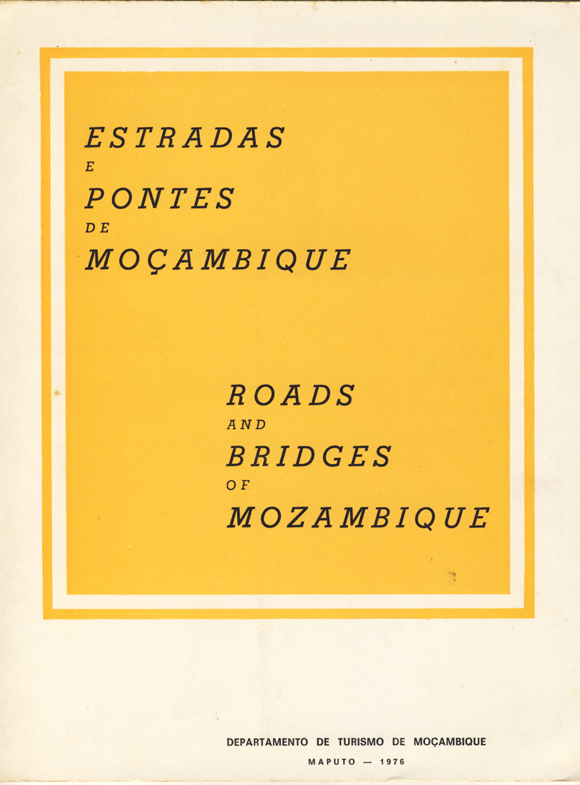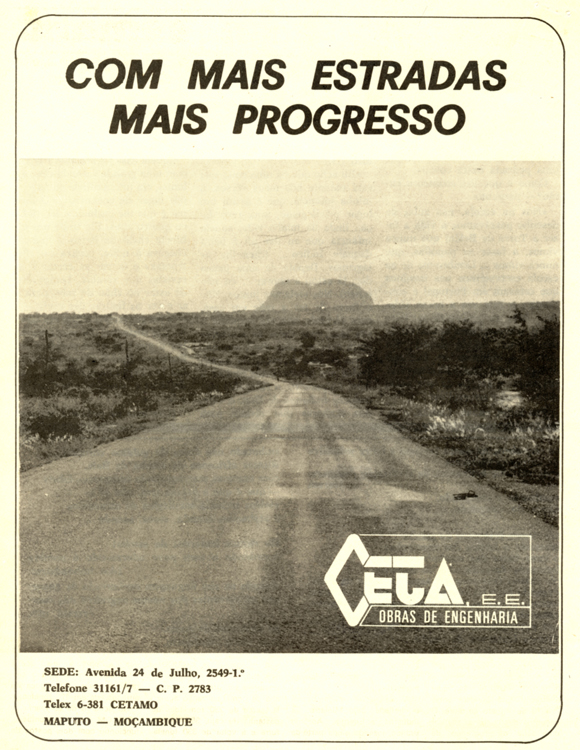Transport: Road Construction
and Maintenance
1972-1994
Dossier MZ-0357
![]()
During the colonial period, the building of all-weather highways for domestic transport was a low priority, and the few such roads that did exist ran primarily along east–west axes toward neighbouring countries such as South Africa, Swaziland (Eswatini), and Rhodesia (Zimbabwe).
From the 1960s onward, some road building did take place, but it was undertaken mainly in support of military operations against the liberation movement, FRELIMO. In 1967 the Portuguese set up the Junta Autónoma de Estradas de Moçambique (JAEM) to coordinate road planning and to contract road construction.
In the early 1970s, the colonial authorities began to construct a north–south highway to link Lourenço Marques with the northern cities of Beira, Quelimane, and Nampula, but by independence this road was only open as far as Beira. There were also plans to build an international highway to Lusaka in neighbouring Zambia. In 1973 there were only about 2,000 miles of paved roadway, and another 3,600 miles of gravelled pavement, in a country with a 1,500-mile-long coastline.

At independence, the Frelimo government began a road construction programme in support of rural development and agricultural marketing, but the maintenance of existing roads was generally neglected, and from 1977 until 1983 the condition of the road network declined sharply. In 1983, the government set up the Departamento Nacional de Estradas e Pontes, which became a “directorate” rather than a mere “department” in 1987. This body was represented at provincial level by delegações provinciais and by various state companies for the construction and maintenance of roads and bridges. In the 10 years between 1979 and 1989 some road building did take place, despite the war. However, several factors contributed to the ongoing deterioration of the existing roads in the country, including inadequate funding for maintenance, and attacks by RENAMO against work crews, whose security could not be guaranteed.

Above: An advertisement from the weekly magazine Tempo (no.721) for the state-owned engineering and road construction enterprise CETA. The abbreviation E.E. stood for “Empresa Estatal”.
The signing of the Acordo Geral de Paz between the government and RENAMO in 1992 and the end of the war opened up new possibilities. In April 1999, the government created yet another road bureaucracy to replace previous bodies, the Administração Nacional de Estradas (ANE), an autonomous entity under the Ministry of Public Works and Housing. ANE is responsible for the management of the national road network, estimated as currently (2020) comprising over 30,000 kilometres of roadway. ANE’s functions were further redefined by legislation passed in 2003 (which set up a roadways fund) and 2007.
MHN Resources
Consolidated Downloadable Zipped Files
Click on the yellow folder image below to download zipped archive of the complete dossier, with 89 documents and reports. New material may be added from time to time: this version is dated 3 March 2021.
![]()



![Aluka: Struggles for Freedom [subscription required] Struggles for Freedom](imgs/aluka_200.png)



